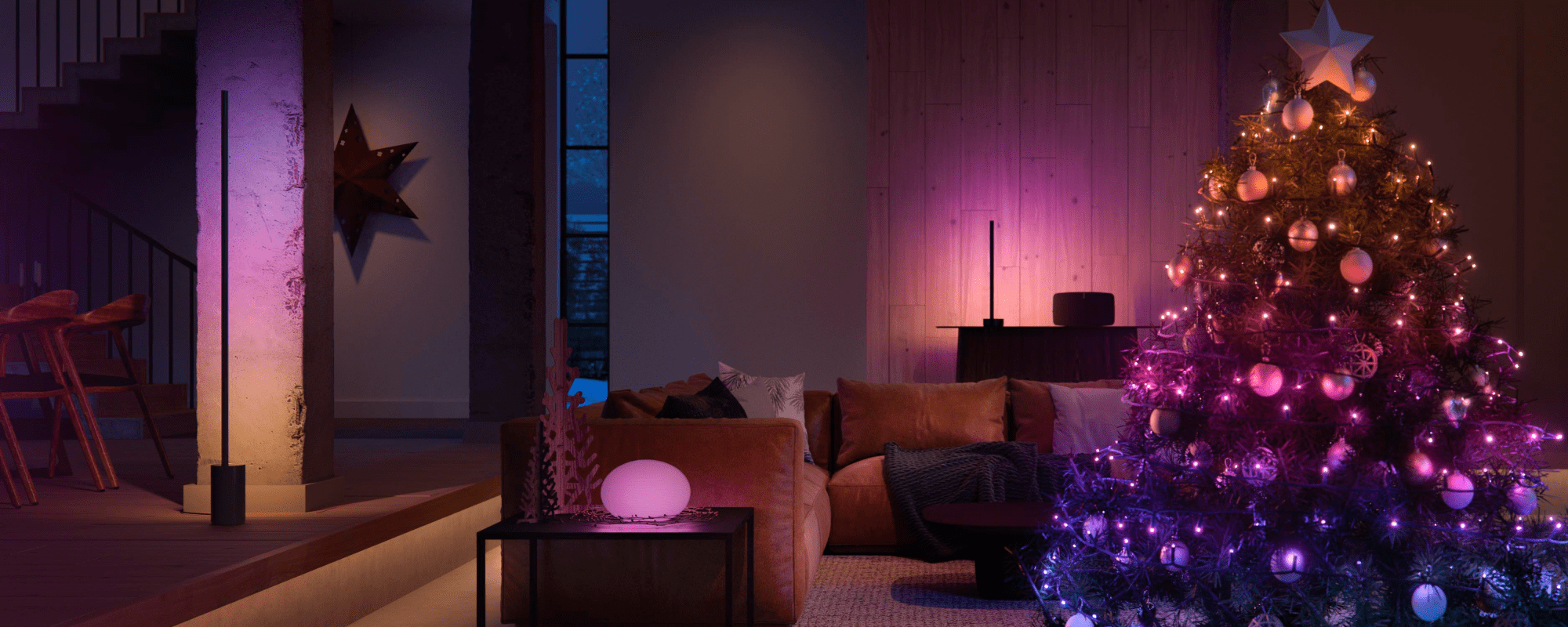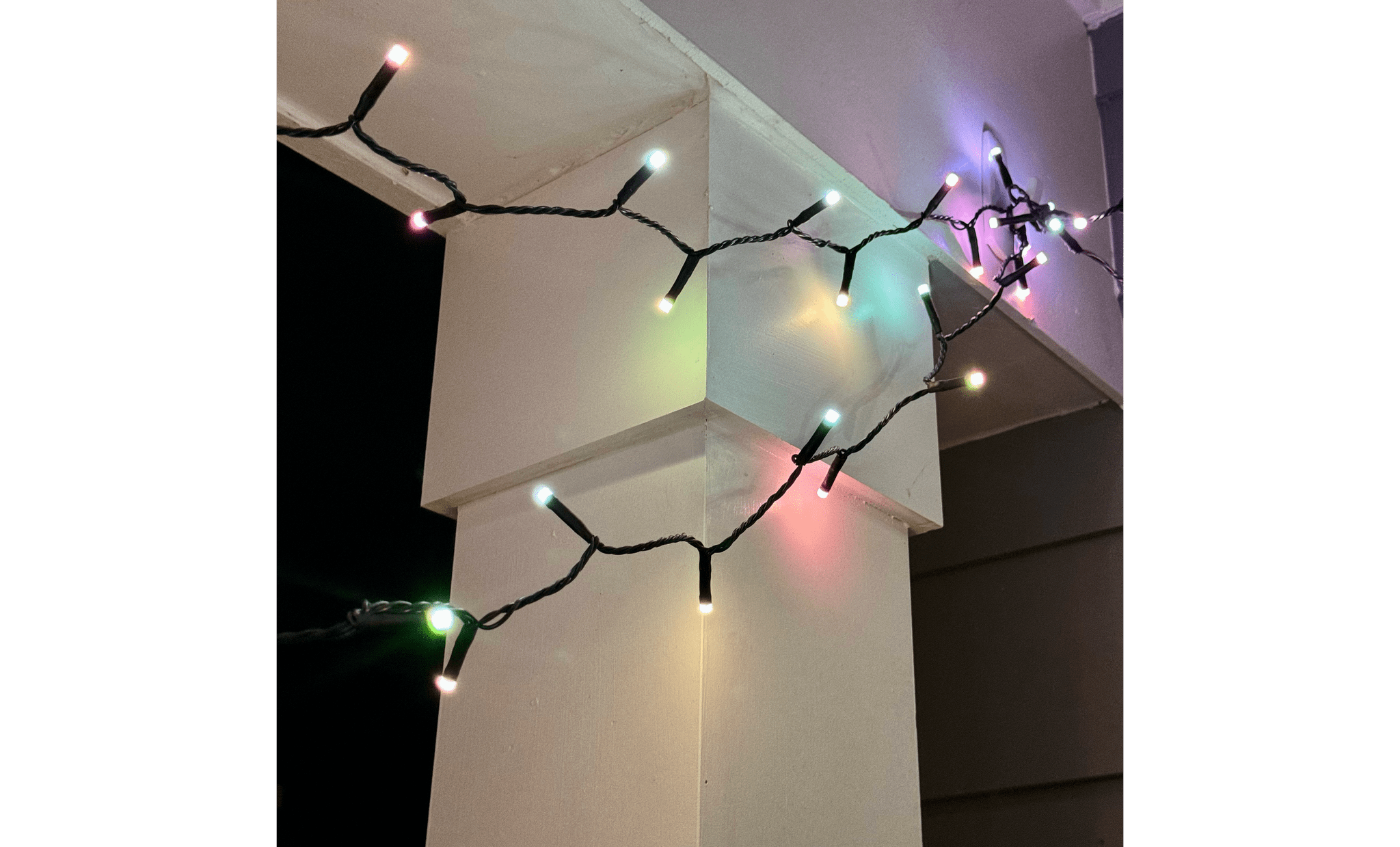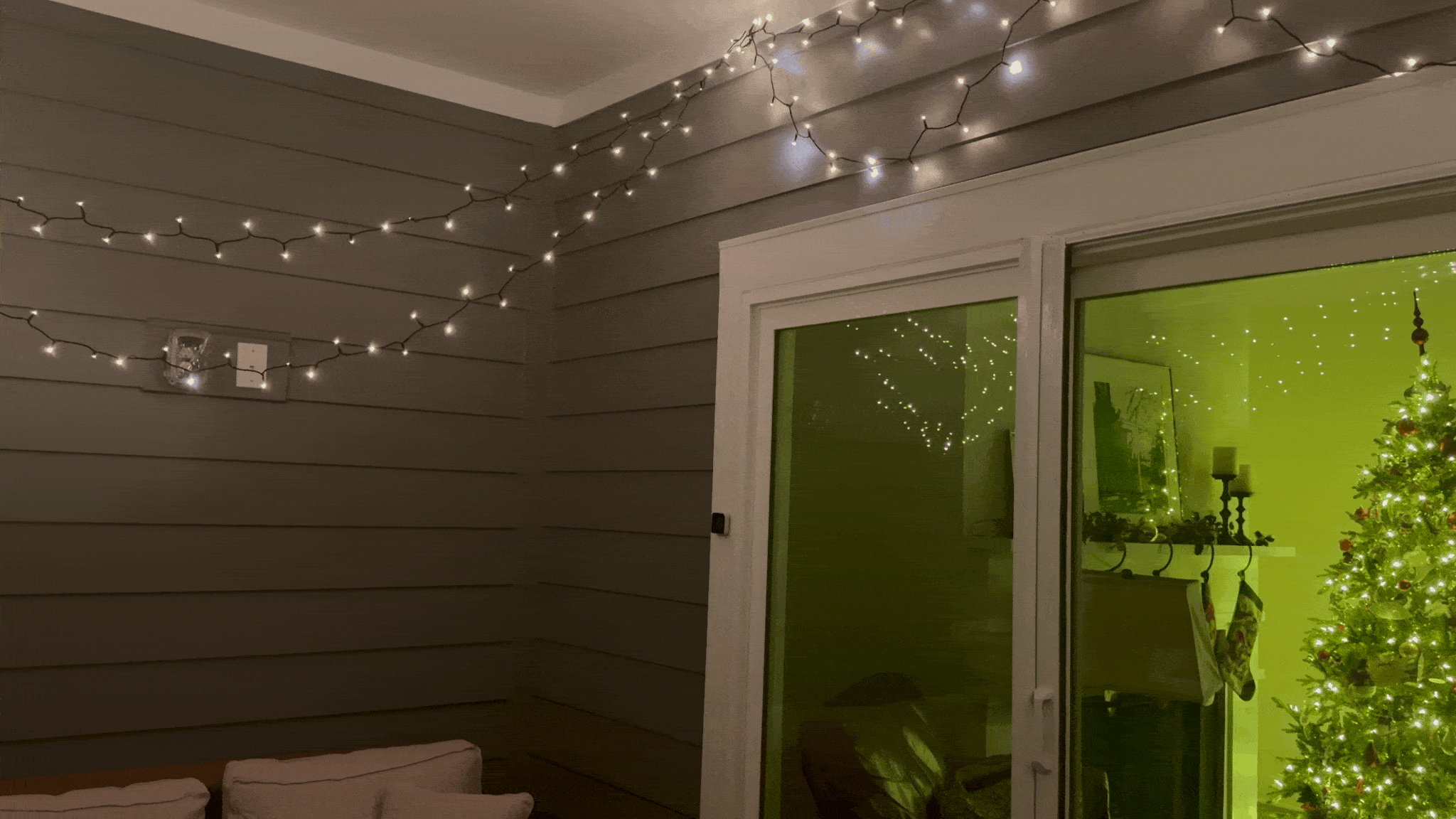A couple of weekends ago, after we put up our Christmas tree, I broke out Hue’s Festavia lights, which the company recently sent me to test. Ever since we moved in late 2022, we’ve had a generic string of big-bulb white lights hanging around the perimeter of the second-floor balcony that I controlled with the help of an outdoor smart plug. The setup provided a little extra light and atmosphere whenever we sat outside in the evening, which I enjoyed. However, I was also curious to see how I could take the setup further and add some holiday cheer with a set of the Festavia lights. So, instead of putting the lights on our tree, I replaced our existing balcony lights with the Hue lights.
Philips Hue offers two sets of Festavia lights: one with 250 lights and the other with 500. At first glance, the lights look a lot like traditional Christmas tree lights, with each tiny LED light spaced about three inches from the next one on a long cord.
Philips Hue sent me its 500-light string of lights, which stretch to over 130 feet (nearly 40 meters) in length. To put that in context, my balcony is roughly 19 feet (5.8m) x 8 feet (2.4m), so I was able to circle the perimeter twice. The 250-light model is half that length and would have worked, too, but I prefer the look of the second loop and the extra light it provides.
Unlike the lights I’ve put on Christmas trees in the past, the power adapter of the 500-light model of Festavia lights is in the middle of the string with lights, extending to the left and right of the cord in a ‘T’ shape. The lights can be used for decorating a Christmas tree, in which case Hue recommends wrapping each strand from just below the middle of the tree and moving up with one strand and down with the other for the best lighting effects. Our tree is artificial and pre-lit, which is why I hung the lights on my balcony instead, draping them from the hooks I already had in place for our old set of lights.
Hanging the lights, which are weatherproof, dimmable, and can change color, was easy. So was adding them to the Hue app, which works the same as adding any other Hue product to its app.
The same app allows you to control your Festavia lights alongside any other Hue lights you own, turning them on and off, creating scenes, adjusting colors, and setting up automations. Many of the same features can be controlled in Apple’s Home app, but it pays off to spend some time in the Hue app browsing through its gallery of colorful scenes, which include several holiday-themed color schemes.
Also, the Festavia lights offer effects, which can be accessed in the Hue app to animate your lights. There are six effects in total:
- Candle
- Fireplace
- Sparkle
- Glisten
- Opal
- Prism
Each effect has a different color scheme and automatically dims and brightens the lights in animated sequences. This is where the Festavia lights really set themselves apart from using a standard string of lights with a smart plug. With the wide array of colors that Hue’s lights can simultaneously display and animate, the range of possible effects is vast.
Overall, the build quality of the Festavia lights is excellent, too, which makes them great for outdoor use where they’re exposed to the elements. That said, I’ve only used the lights for a couple of weeks so far, so longevity is an open question. Fortunately, though, the lights come with a two-year warranty, and it’s worth noting that I’ve used other Hue products for years and never had one break.
So, if you’re looking for maximum flexibility to decorate a Christmas tree this year or just want to add some colorful, animated flare to your home, the Festavia lights are an excellent, although expensive, choice. Hue Festavia lights can be purchased directly from Hue, Amazon, and other retailers for $219.99 (250-light set) or $359.99 (500-light set).





